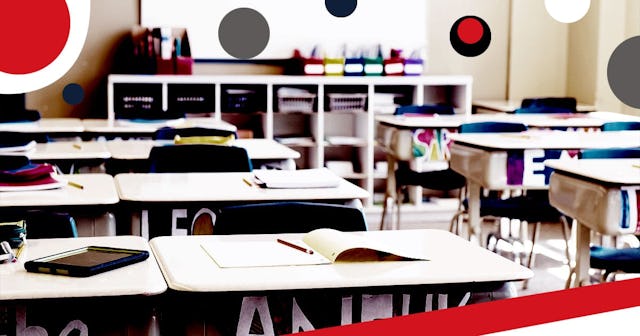I'm An Educator, And I Have 4 Things To Say About The CDC's Guidelines For Reopening Schools

The CDC has released their recommendations and guidelines for safely reopening schools during the COVID-19 pandemic. Since that news broke, I’ve found myself triggered by the reactions of others, and I want to address three recurring themes that I’m seeing across social media right now:
1. The CDC offered its recommendations — WITH the caveat that each state, community, district and school has the ability to craft a plan that works for them. There is no one-size-fits-all. Many of you seem to be missing that point entirely.
2. I see a lot of talk about what children and teachers are not capable of. As an educator myself, my strong feeling is that we underestimate the capabilities of both. The miracle about children is resiliency. WE CAN CREATE RESILIENT CHILDREN. Children can cultivate resilience in themselves. The key factor in that is having even just one safe harbor — a person they can count on to affirm their worth, love them, and be a safe place to land. For many children, schools are the only source of this in their lives.
We are all living through a collective trauma. This trauma is compounded for many by the chronic trauma they already experience. So to be concerned about the trauma our kids are experiencing is natural, but as parents we need to understand that WE have the ability to make this not a trauma to be endured and damaged by, but a trauma that was experienced and recovered from. And the safety, structure and routine of our schools is a vital part of that.
3. And our teachers? They are brilliant. They are creative. They love our kids. We all know that they are overburdened and underpaid at the best of times. Class sizes are too big, special education resources are far too limited, and our schools are grossly underfunded. However, invention is born of necessity. It could be that this crisis, and the changes to how we educate children during it, end up being the catalyst that propels a long overdue transformation in how we view and treat education, and educators. Perhaps this is the event that leads to smaller class sizes, more differentiation in instruction, shorter work weeks, an increase in special education resources and staffing, and equity in technology access. But if that’s what we want, we have to create it, rather than getting stuck on what’s “impossible.”
4. Our society hasn’t been called to sacrifice collectively since WW2. We don’t know how…but we have to learn. We have to transform our systems to make sure our kids are getting what they need. We have to wear masks to protect others. As states begin to reopen, we have to continue to practice social distancing and stay home as much as possible. These things are not optional right now.
Does doing all of these things really suck? Sure.
But humans can, and have, survived worse and come out on the other side, and so will we. So to me, what that means is not focusing on how these recommendations will “ruin school” and are impossible to implement, but rather focusing on what we can do to make this transition as smooth as we possibly can. That will require all of our grit, determination, ingenuity, empathy and optimism. I believe that children and adults can rise to the occasion. Our children will follow our lead, so it’s critically important that we set the appropriate tone.
Believe in your kids and yourselves and our educators, and advocate for them! But, do yourself a favor and imagine what is possible, rather than letting yourself be afraid of the call to change and adapt. Changing and adapting is literally…growth. Let’s work together.